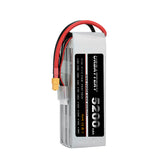What is an 18650 Lithium Battery? Benefits, Applications, and Key Classifications Explained
04 Aug 2025
What is an 18650 Lithium Battery?
The 18650 battery is a type of rechargeable lithium-ion cell. The number "18650" refers to its dimensions: 18mm in diameter and 65mm in length, with the "0" signifying its cylindrical shape.
Types of 18650 Batteries
- Lithium-ion (Li-ion): Nominal voltage of 3.7V, fully charged at 4.2V.
- Lithium Iron Phosphate (LiFePO4): Nominal voltage of 3.2V, fully charged at 3.6V.
Capacity typically ranges from 1200mAh to 3350mAh, with common values between 2200mAh and 2600mAh.
Key Advantages of 18650 Batteries
- High Voltage: Typically 3.6V to 4.2V, much higher than NiCd or NiMH batteries (1.2V).
- No Memory Effect: Batteries can be charged anytime without the need to fully discharge.
- Low Internal Resistance: Especially with polymer cores, reducing energy loss.
- Long Lifespan: Over 500 charge cycles with proper usage.
- High Capacity: Single cell capacities range from 1200mAh to 3600mAh.
- Safe and Stable: Built-in protection against overcharging and over-discharging. Many models include a protection board.
- Modular: Can be used in series or parallel to form custom battery packs.
- Wide Applications: Compatible with a wide range of devices from laptops to drones.
Applications of 18650 Batteries
- Energy Storage: Used in power grid systems, solar storage, telecom base stations, and home energy storage units.
- Electric Mobility: Found in e-bikes, electric scooters, and electric vehicles (EVs).
- Consumer Electronics: Commonly used in laptops, flashlights, toys, cameras, and power banks.
Classifications of 18650 Batteries
By Performance
- Energy Type: High capacity, ideal for long-duration use (e.g. laptops).
- Power Type: High discharge rate, suitable for devices needing quick bursts of energy (e.g. power tools).
- Hybrid: Balances energy and power—ideal for hybrid electric vehicles.
By Electrolyte
- Liquid Lithium-ion Battery (LIB): Most commonly used in current applications.
- Polymer Lithium-ion Battery (PLB): Uses a gel or solid polymer as electrolyte; lighter and more flexible.
By Shape
- Cylindrical: Example: 18650, enclosed in metal casing.
- Prismatic: Rectangular cells usually in hard cases.
- Pouch (Soft Pack): Flexible, lightweight, usually referred to as polymer batteries.
By Electrode Material
Cathode Materials:
-
- Lithium Iron Phosphate (LFP)
- Lithium Cobalt Oxide (LCO)
- Lithium Manganese Oxide (LMO)
- NCM/NCA (Nickel Cobalt Manganese/Aluminum Oxide)
Anode Materials:
-
- Graphite
- Lithium Titanate (LTO)
- Graphene-based composites
Conclusion
The 18650 lithium battery is a versatile and high-performance energy solution, widely adopted in modern electronics and energy systems. Understanding its structure, benefits, and applications helps both consumers and businesses make informed decisions when integrating battery technology into their products or lifestyles.
Tags:



